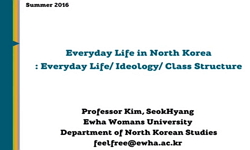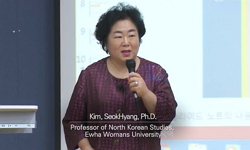In this article, it is argued that until recently Pyongyang has been using diplomacy to deflect threats of coercion or possibly preemption from its nuclear weapons program. After the decision was made to acquire nuclear weapons capability, Pyongyang d...
http://chineseinput.net/에서 pinyin(병음)방식으로 중국어를 변환할 수 있습니다.
변환된 중국어를 복사하여 사용하시면 됩니다.
- 中文 을 입력하시려면 zhongwen을 입력하시고 space를누르시면됩니다.
- 北京 을 입력하시려면 beijing을 입력하시고 space를 누르시면 됩니다.



North Korea`s Instrumentalization of Diplomacy: Passing Through the Danger Zone of its Nuclear Weapons Program = North Korea`s Instrumentalization of Diplomacy: Passing Through the Danger Zone of its Nuclear Weapons Program
한글로보기https://www.riss.kr/link?id=A99944066
- 저자
- 발행기관
- 학술지명
- 권호사항
-
발행연도
2012
-
작성언어
-
- 주제어
-
KDC
300
-
등재정보
SSCI,SCOPUS,KCI등재
-
자료형태
학술저널
- 발행기관 URL
-
수록면
303-320(18쪽)
- DOI식별코드
- 제공처
-
0
상세조회 -
0
다운로드
부가정보
다국어 초록 (Multilingual Abstract)
In this article, it is argued that until recently Pyongyang has been using diplomacy to deflect threats of coercion or possibly preemption from its nuclear weapons program. After the decision was made to acquire nuclear weapons capability, Pyongyang decided to use the process of nuclear crisis diplomacy that unfolded in the early 1990s in ways that would allow it to weather any repercussions and counter any efforts of coercion. Pyongyang did not, it seems, negotiate in good faith toward realizing a goal of actual denuclearization. In the paper, a historical analogy is used to demonstrate the broader strategic logic. At the turn of the twentieth century, imperial Germany embarked on a plan to build a major navy. In order to prevent preemption to be triggered by such a radical program, its leadership developed the so-called Tirpitz Plan, which German foreign policy wanted to become the instrument of this armament program and prevent preemption. By using the Tirpitz Plan as a matrix for analysis of North Korea`s nuclear diplomacy, new light is shed on nearly two decades of denuclearization efforts. Pyongyang`s strategic thinking about nuclear weapons and its instrumentalization of diplomacy come into clear focus. The findings open up new questions for ongoing or future efforts to prevent further nuclear proliferation as well.
동일학술지(권/호) 다른 논문
-
Redefinition of the ROK-U.S. Alliance and Implications for Sino-ROK Relations: A Chinese Perspective
- 한국국방연구원
- ( Wei Min Wang )
- 2012
- SSCI,SCOPUS,KCI등재
-
The Structural Elements of North Korea`s Insecurity Applying the Regional Security Complex Theory
- 한국국방연구원
- ( Young Taek Park )
- 2012
- SSCI,SCOPUS,KCI등재
-
The North Korean Nuclear Threat and South Korea`s Identity Politics in 2006
- 한국국방연구원
- ( Sung Bae Kim )
- 2012
- SSCI,SCOPUS,KCI등재
-
- 한국국방연구원
- ( Tae Ho Kim )
- 2012
- SSCI,SCOPUS,KCI등재




 KCI
KCI KISS
KISS






